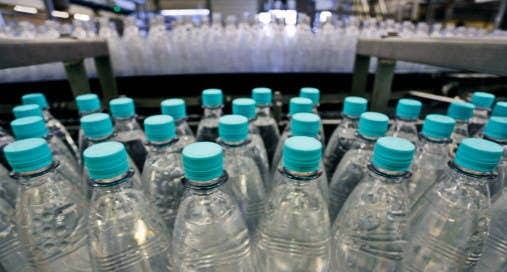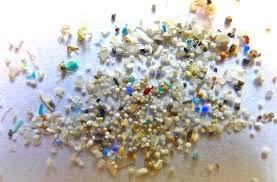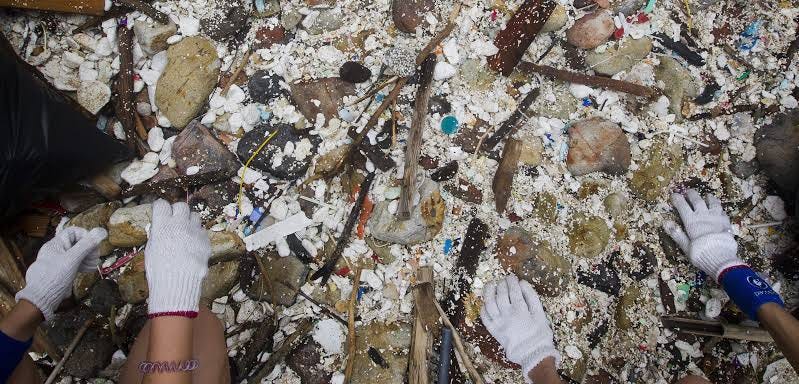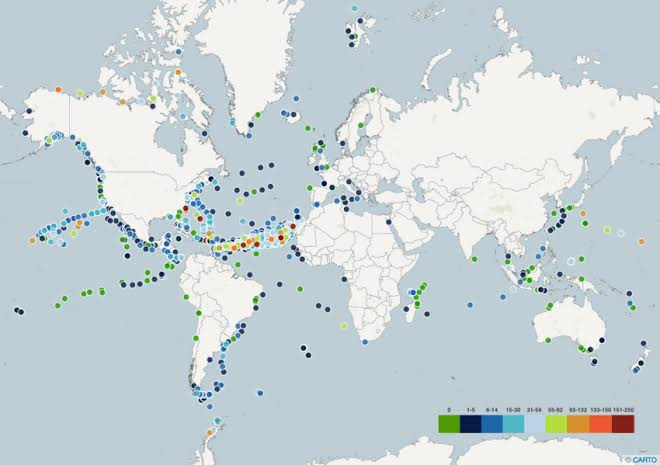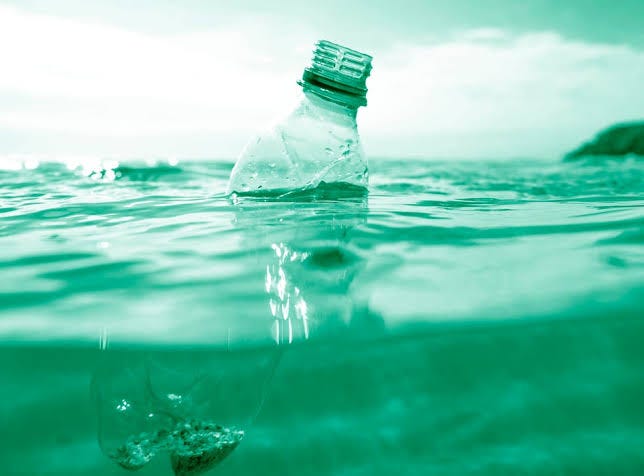Ban Bottled Water: Microplastics reside in them globally
Marine animals suffer stunted growth, become vulnerable to predators, experience difficulty in the hatching their fertilised eggs. The same thing could happen to humans.
May contain microplastics, Credit, Buzz Feed News
In Europe, experts discover their existence. In France, laboratory tests confirm 78% of them in test samples. They come in the form of polypropylene, polyethylene, and terephthalate. In the United States, experts confirm their presence even at the Trump Tower in New York, where people pay premium for them, exposing themselves to it on a day-by-day basis, taking them with glee.
People find them in Nigeria. They find them in Uganda, on the shores of Lake Victoria. They find them in Ghana, posing a potential risk to the health of men, women, and children, an indication that no one is safe from their presence. They find them in nations such as Kenya, tiny particles and flakes, ingested by animals and humans, rapidly becoming a norm on the African continent, which faces yet another challenge to the health of millions of people.
Microplastics in ocean, Credit, Stockholm Environment Institute
Microplastics in bottled water may affect the health of millions of people, and they show their presence worldwide. Before, experts detected their prevalence in the world’s oceans, where more than five trillion pieces of plastics swim about, but now they abound in bottled water. Before, experts found them in marine creatures, but now they exist in human blood, with 83 percent of samples from Germany to Cuba to France containing microplastics, something people should not be ingesting. Before, experts thought only sea creatures harbored them, but now they’ve become prevalent in Lagos, Africa’s largest city, and people fear they might cause a long-term danger.
Why Microplastics in Bottled Water
Plastic microfibers float in the air. They abound around us, not just outside factories manufacturing bottled water, but inside them too. They may penetrate bottled water through the packaging process, so now brands such as Aqua, Aquafina, Evian, Dansani, and others harbor microplastics, with manufacturers confounded about the development, despite their strict filtration measures.
China has microplastics problem, Credit, Hakai Magazine
In China, the daily usage of plastic bottles occurs on a massive scale, just as in other parts of the world. Experts investigated the usage of polycarbonate and polypropylene for the manufacture of bottled water. Their findings revealed that water bottles released microplastics in various amounts. Thick-necked bottles released the object. Thin-necked bottles, as if in a competition, released microplastics, even though at a lesser quantity than the thick-necked ones. All manner of water bottles released microplastics, raising concerns about environmental safety and human health.
Plastics degrade over time. They disintegrate into microplastics, which accounts for why bottled water in France contains them. They degrade into microplastics, aided by the additives used in the manufacture of bottled water, with microplastics per liter ranging from one to 121 microplastics. They disintegrate with time, with the process affecting bottles meant for children, who should not be ingesting them, because it may affect their well-being.
World's microplastics distribution, Credit, ResearchGate
With the degradation of plastics over time, children become exposed to them, risking their long-term health. Through investigations carried out on bottled water, experts noticed their presence in South Africa, which shows the prevalence of the material on a massive scale. Since microplastics float in the air, they easily get inside the premises of bottled water manufacturing companies, settling into the product, and it doesn’t matter whether a high quality plastic went into the processing of the water.
Possible Consequences
Microplastics affect fish. According to studies, they inhibit them from hatching their fertilised eggs. They stunt the growth of marine creatures, making them vulnerable to attacks from predators such as mammals, which prey on them. Microplastics increase the mortality rates of fish, and it’s not surprising, since they absorb toxic chemicals from the marine environment, and toxic materials tend to work negatively in all creatures, including fish and man.
Microplastics could bring hazardous effects in humans. Some investigators suspect that they promote oxidative damages, modifying antioxidative and metabolic neurotoxicity, and due to the ecotoxity of microplastics for biota, experts also feel health implications may result from human exposure to them, especially as they take refuge in the gastrointestinal tract.
Unfortunately, microplastics increase all the time. Larger pieces divide into smaller and smaller ones. Even if human production of plastics experiences a reduction, the splitting process continues in existing ones, smaller pieces dividing into even smaller ones. And with the production of plastics expected to double by 2025, their presence in bottled water could increase, posing dangers.
The United Nations says no conclusive proof exists about danger from drinking bottled water, even though the microplastics in them increase. It says no conclusive proof exists about the dangers they pose to humans, even though they inhibit the hatching of fertilized eggs in fish, even though they make sea creatures vulnerable to predators, even though they stunt their growth. But if the marine creatures suffer consequences, the same thing could happen to humans, so steps should be taken to prevent a future danger.
What Should Be Done
Until research shows no future danger, governments should ban bottled water. Until transparency standards on the manufacture of bottled water indicate their composition, they should be banned, while safer alternatives to bottled water are explored. Since they create concern in the minds of the public, bottled water should be banned, while reviews start on the very scarce available evidence about it, with the aim of identifying evidence gaps.
How to Reduce Harm from Microplastics’ Presence in Bottled Water
Reducing bottled water intake, Credit, The Independent
What are Microplastics? And 6 tips on how reduce to them. Read More.
Concerned About Microplastics in Drinking Water? The Right Filter Can Help. Read More.
The Best Bottled Water To Buy for Maximum Hydration and Health. Read More.
How to Choose the Right Bottled Water. Read More.
WHAT TO EAT
Traditional Chinese Vegan diet, Credit, The Works of Life

